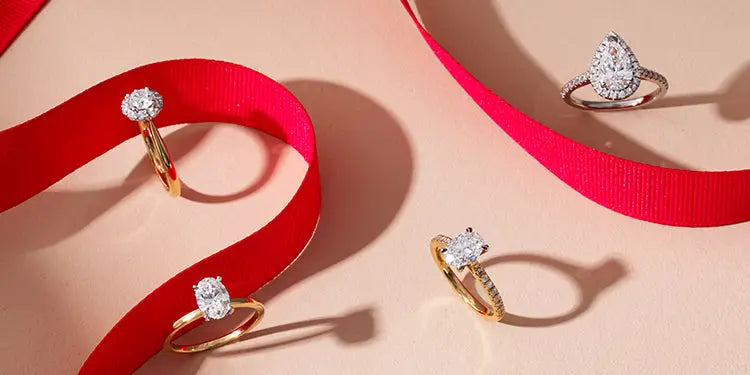Introduction
So, you’re thinking about a lab diamond rings platinum vs gold and can’t decide whether to go for platinum or gold? You’re not alone. With the rise of lab-grown diamonds, many people are reassessing their choices for ring settings. It’s not just about how the diamond looks, but how the metal complements it. Let’s dive into the pros and cons of platinum and gold to help you make an informed decision.
Why Lab Diamonds?
The Rise of Lab Diamonds
Lab diamonds are becoming increasingly popular. They’re real diamonds, not imitations or synthetic stones. Created in a controlled environment, they have the same physical and chemical properties as natural diamonds. This means you get a high-quality gem, often at a lower price, with fewer ethical concerns. Plus, they’re just as dazzling as their mined counterparts!
Benefits of Lab Diamonds
Lab diamonds offer several perks. They’re generally less expensive than natural diamonds, allowing you to get a larger stone or more intricate design for the same budget. They also tend to be more ethical and eco-friendly. Because they’re created in labs, they don’t contribute to the environmental damage or conflict associated with traditional diamond mining.
Platinum vs. Gold: An Overview
What is Platinum?
Platinum is a dense, precious metal known for its rarity and durability. It’s naturally white and has a sleek, modern look that pairs beautifully with diamonds. It’s also hypoallergenic, making it a great choice for those with sensitive skin.
Characteristics of Platinum
Platinum is heavier and denser than gold, which makes it feel more substantial on the finger. It’s also extremely resistant to tarnishing and scratching, which means it maintains its shine and appearance over time. One of platinum’s standout features is its natural white sheen, which doesn’t need rhodium plating like white gold.
What is Gold?
Gold has been used in jewelry for thousands of years. It comes in various colors and purity levels, with yellow, white, and rose gold being the most popular for engagement rings. Gold is often alloyed with other metals to increase its durability.
Characteristics of Gold
Gold is valued for its beauty and malleability. It’s a soft metal, so it’s often alloyed with other metals to enhance its strength. Yellow gold has a warm, classic look, while white gold, which is often coated in rhodium, has a more modern feel.
Pros and Cons of Gold
Pros:
- Variety: Available in different colors and alloys.
- Price: Generally less expensive than platinum.
- Tradition: Classic and timeless.
Cons:
- Maintenance: White gold needs regular re-plating to maintain its appearance.
- Durability: Not as scratch-resistant as platinum.
Comparing Platinum and Gold for Lab Diamond Rings
Durability and Strength
When it comes to durability, platinum wins hands down. Its density and strength mean it can withstand daily wear and tear better than gold. Gold, while still durable, may show signs of wear over time and may need more frequent polishing.
Aesthetic Appeal
Both metals offer distinct looks. Platinum’s cool, silver-white color can make diamonds appear even more brilliant. Gold, on the other hand, adds a warm tone that can enhance the overall look of the ring. It really comes down to personal preference and the style you’re aiming for.
Cost Considerations
Price of Platinum
Platinum is significantly more expensive than gold. This is due to its rarity and the complex process of mining and refining. However, its durability and timeless appeal might make it worth the extra cost for some.
Price of Gold
Gold is more budget-friendly, which allows you to allocate more of your budget to the diamond itself. Depending on the karat and alloy, gold can provide a beautiful setting without breaking the bank.
Maintenance and Care
Caring for Platinum
Platinum is relatively low-maintenance. It doesn’t tarnish, but it can develop a patina over time. Some people like this natural change in appearance, while others prefer to have their rings professionally polished to restore the original shine.
Caring for Gold
Gold requires more maintenance. White gold, in particular, needs periodic re-plating with rhodium to keep its bright white finish. Yellow and rose gold might show scratches more easily, so regular polishing might be necessary to keep them looking their best.
Environmental Impact
Platinum Mining and Environmental Concerns
Platinum mining can be less environmentally damaging compared to gold mining, but it’s not without its issues. It often involves significant land disruption and the use of chemicals, though platinum’s rarity means it’s mined in smaller quantities.
Gold Mining and Environmental Concerns
Gold mining has a more significant environmental footprint. It often involves large-scale land disruption, the use of toxic chemicals, and can have serious ecological impacts. However, recycled gold offers a more sustainable option.
Final Thoughts
Choosing between platinum and gold for your lab diamond ring is a personal decision that depends on your budget, lifestyle, and aesthetic preferences. Platinum offers unparalleled durability and a sleek, modern look, while gold provides a classic, warm appearance at a more affordable price. Both metals can beautifully showcase lab created diamonds, so you can’t go wrong with either. Ultimately, the best choice is the one that makes you happiest and feels right for you. Happy ring shopping!

